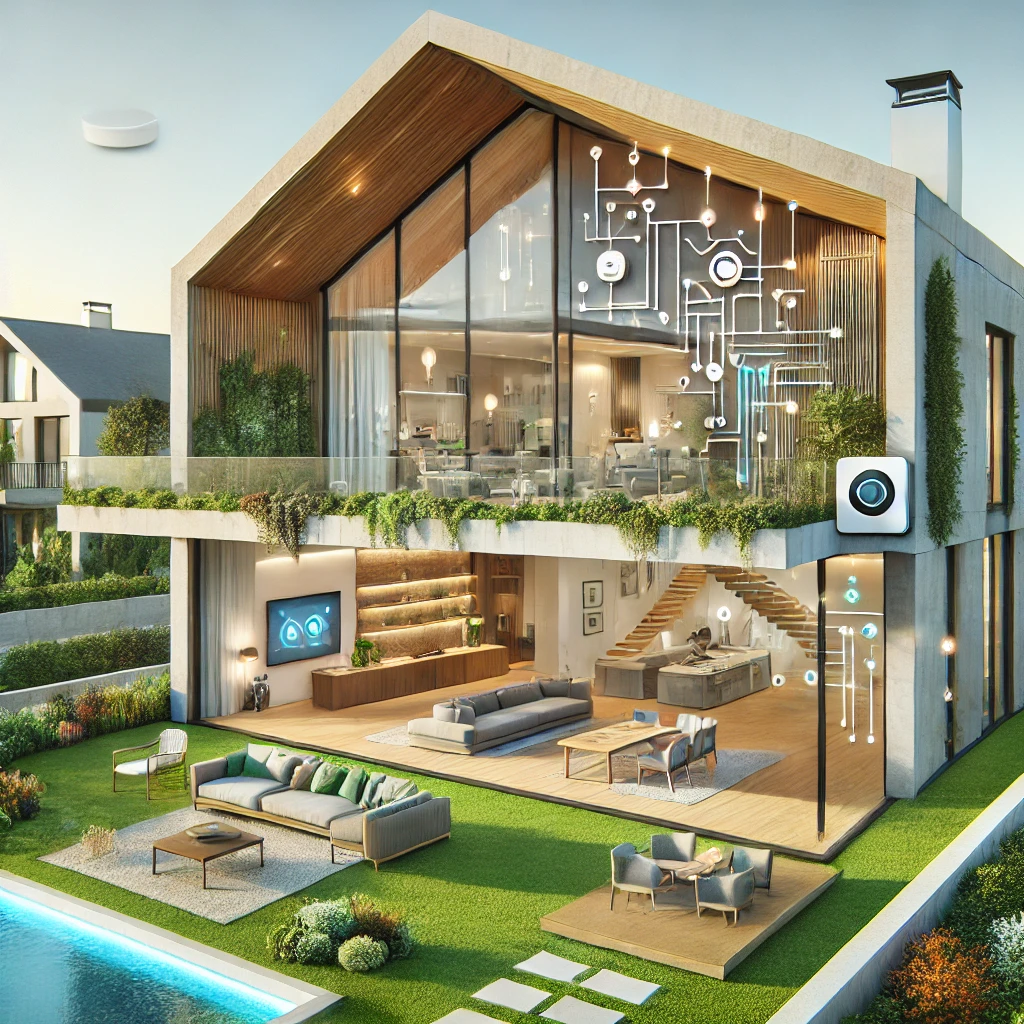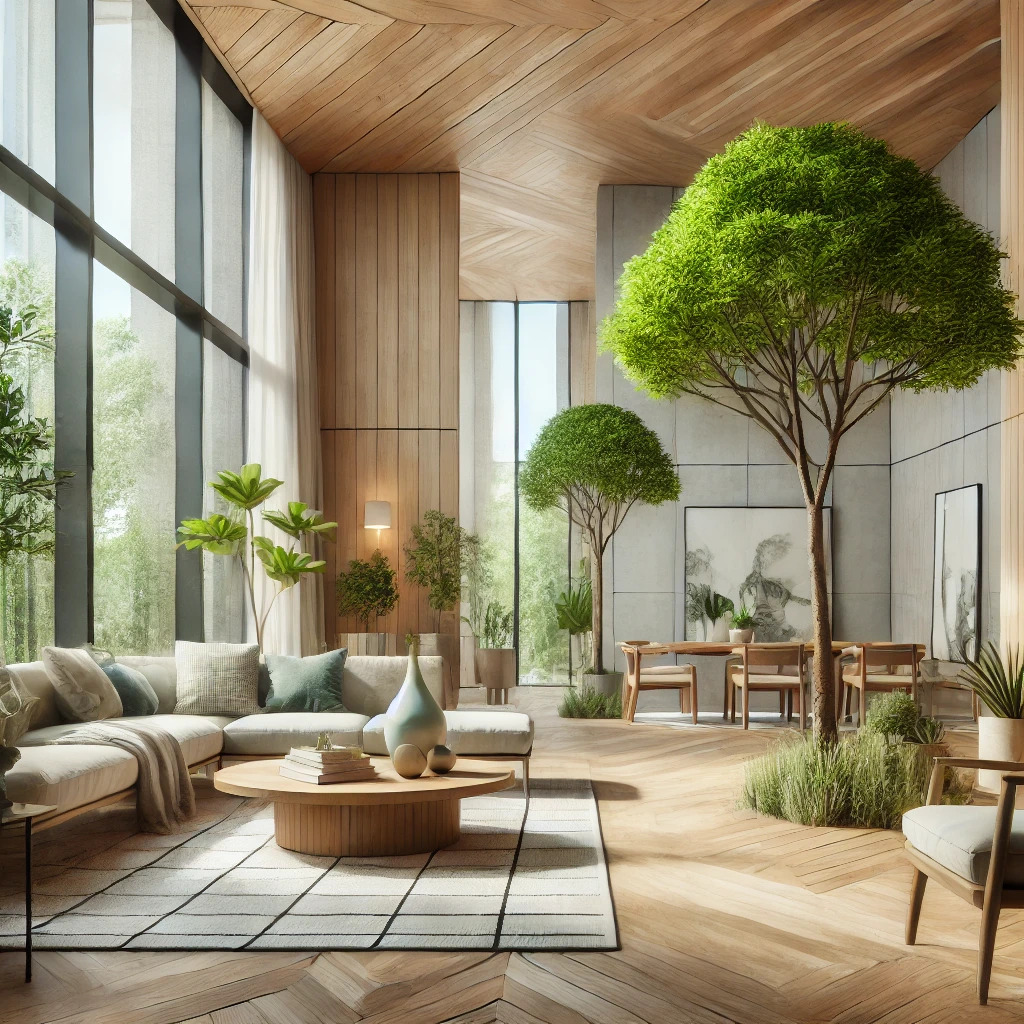This blog post delves into the four basic principles of architectural design that ensure a successful project. Its purpose is to guide architects in the architecture and interior design studio, to offer a detailed explanation of each principle and to illustrate them with real-life examples.
1. ‘Form follows function’: The Foundation for Architectural Design
The principle of ‘form follows function’ is a fundamental aspect of architectural design. She emphasizes that the shape and design of a building should be determined according to its purpose and functionality. In other words, the function of a space should drive its shape and design. This principle ensures that the architectural design will be practical and efficient, and will serve its purpose effectively.
An excellent real-life example of this principle is the Guggenheim Museum in New York, designed by renowned architect Frank Lloyd Wright. The unique spiral shape of the museum was specially designed to accommodate the display and viewing of works of art. The continuous ramp system allows visitors to move effortlessly through the museum, experiencing the art in a logical and coherent way. The shape of the building was dictated by the function of displaying art, creating an immersive and engaging experience for visitors.
Another example is the Sydney Opera House in Australia, designed by architect Jørn Utzon. The iconic shell-like structures of the opera house were designed to provide optimal acoustics for performances. Utzon’s design was influenced by the desire to create a space that would improve the sound quality and create an extraordinary experience for both the performers and the audience. The building’s shape, with its distinctive sail-like shells, follows the function of providing exceptional sound quality and has become an iconic symbol of Australia.
For a consultation call at no cost and without obligation call now or leave details in the box
2. Creating a balance: how important is the interplay between aesthetics and functionality?
The interplay between aesthetics and functionality is of utmost importance in architectural planning. While functionality ensures that the space serves its intended purpose efficiently, aesthetics enhance visual appeal and create a pleasant environment. Creating the right balance between the two is essential to the success of the project.
A designed building not only functions efficiently but also creates a positive and inspiring atmosphere. For example, consider the Burj Khalifa in Dubai, the tallest building in the world. Its sleek and modern design not only serves its purpose as a commercial and residential space but also captivates the eye with its amazing aesthetics. The interplay between functionality and aesthetics made it an architectural wonder.
Similarly, the High Line in New York demonstrates the importance of balancing aesthetics and functionality. Built on an abandoned railroad, this elevated park not only provides green space for the community but also showcases innovative landscape design. The combination of lush vegetation, art installations and seating areas creates an attractive and functional urban oasis.
However, it is important to note that the balance between aesthetics and functionality may vary depending on the purpose of the project. For example, a museum or gallery may prioritize aesthetics to create an immersive experience, while a hospital or school will prioritize functionality for the comfort and safety of its users.
3. ‘Less is more’: the meaning of simplicity in design
In architectural design, the principle of ‘less is more’ emphasizes the meaning of simplicity. This principle advocates eliminating unnecessary elements and focusing on the essential aspects of design. By embracing simplicity, architects can create spaces that are visually appealing, functional and timeless.
1. Minimalist aesthetics:
The idea of simplicity in design often aligns with minimalist aesthetics. Minimalism emphasizes clean lines, uncluttered spaces and a limited color palette. This approach allows the architecture to speak for itself, without unnecessary decorations or distractions. For example, the Farnsworth House by Ludwig Mies van der Rohe exemplifies minimalist design with its simple, rectangular shape and extensive use of glass. The minimalist approach creates a sense of peace and harmony, allowing users to focus on the beauty of the building and its surroundings.
2. Functional efficiency:
Simplicity in design goes hand in hand with functional efficiency. By eliminating unnecessary complexities, architects can optimize the functionality of the space. This principle is especially important in spaces such as offices or residential buildings, where efficiency and ease of use are key. For example, open floor plans with minimal partitions promote better flow and communication, improving productivity in work environments.
3. Eternal Attraction:
Simplicity in design also ensures that a project stands the test of time. By avoiding trendy or overly ornate elements, architects create designs that remain relevant and attractive for many years. This principle is evident in iconic buildings such as the Sydney Opera House, designed by Joren Utzon. The building’s clean, streamlined forms have made it a timeless architectural masterpiece that continues to fascinate visitors and inspire generations to come.

An illustration depicting a classic minimalist architectural design for a bathroom
For a consultation call at no cost and without obligation call now or leave details in the box
4. Sustainability: Is this the future of architectural design?
Sustainability has become an increasingly important aspect of architectural design, with an increasing emphasis on environmental awareness and resource conservation. Architects are now incorporating sustainable practices into their projects to minimize the negative impact on the environment and create energy efficient and environmentally friendly buildings.
1. Environmental impact:
One of the main reasons why sustainability is essential in architectural design is its potential to reduce the environmental impact of buildings. Sustainable design strategies focus on minimizing energy consumption, reducing carbon emissions and using environmentally friendly materials. For example, incorporating passive design techniques such as natural ventilation and daylighting can significantly reduce the need for artificial lighting and air conditioning, thereby reducing energy consumption and greenhouse gas emissions. In addition, using recycled or renewable materials can help minimize the depletion of natural resources and reduce waste.
2. Energy efficiency:
Energy efficiency is a fundamental aspect of sustainable architectural design. By incorporating energy efficient systems and technologies, architects can significantly reduce a building’s energy consumption. This can be achieved through the use of insulation, high performance windows, efficient HVAC systems and renewable energy sources such as solar panels. For example, the Bullitt Center in Seattle is an excellent example of sustainable design, incorporating features such as solar panels, rainwater harvesting, and a highly efficient mechanical system. The building produces more energy than it consumes, making it a net zero energy facility.
3. Health and well-being:
Sustainable design not only benefits the environment but also contributes to the health and well-being of the tenants. By prioritizing indoor air quality, natural lighting, and access to nature, architects can create spaces that promote physical and mental well-being. For example, the Edge building in Amsterdam focuses on providing a healthy and comfortable work environment, incorporating features such as a smart lighting system, efficient HVAC and green spaces. Studies have shown that sustainable buildings with improved indoor environmental quality can improve productivity, reduce absenteeism and improve occupant satisfaction.
By incorporating these four key principles into their design process, architects can create more functional, aesthetic and sustainable buildings. These principles form the backbone of every successful architectural project, serving as a comprehensive guide from the conceptualization phase to the completion of the project. They promote a holistic approach to design that not only meets customer needs but also has a positive impact on the community and the environment.




